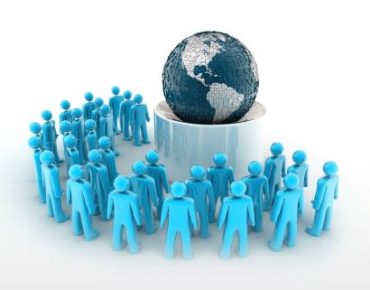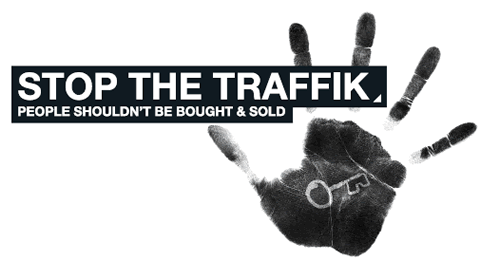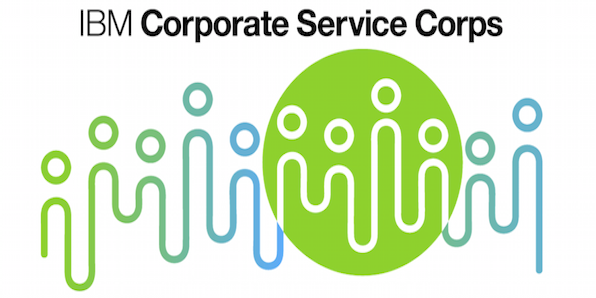Predictive Analytics and Human Trafficking: ‘We Will Never Rescue Our Way out of this Crime’

Source: IBM
In the annals of venality, human trafficking has metastasized into one of the most horrific organized crimes against humanity since the Holocaust. It’s estimated that 40 million people, 80 percent of them girls and women, are currently ensnared in a nightmare of abduction, forced labor, sex work and, incredibly, the removal and sale of organs for transplant.
Trafficking happens in the shadows all over the world, wherever criminals, working in networks, can target vulnerable people. It’s happening in the U.S. (where many teenagers taken by traffickers are assumed to be runaways) and the rest of the developed world, but most intensively it’s in the less-developed world. Captive children are intimidated into silence – or brainwashed into thinking their captors care about them. Impoverished and held in foreign counties with foreign languages, escape is rare.
Now IBM in alliance with UK-based activist group Stop the Traffik and a dozen other humanitarian NGOs and law enforcement organizations, is leading an effort to develop a global, centralized incident reporting, data sharing and predictive analytics system with the goal of gaining intelligence into where and when trafficking happens – and will happen. The tech giant’s Global Citizenship Initiative has committed more than 20 data scientists, programmers and development managers to building the system, called Stop the Traffik Hub (or, simply, the Hub), which incorporates an array of IBM data collection, management and analytics tools.
 At an emotional and inspirational presentation during this week’s IBM Think conference in Las Vegas, a leader of Stop the Traffik (the names of everyone quoted in this article have been withheld to protect their safety) spoke about the scourge of trafficking and its global scale – including the unique value abducted people hold for criminal and terrorist trafficking rings.
At an emotional and inspirational presentation during this week’s IBM Think conference in Las Vegas, a leader of Stop the Traffik (the names of everyone quoted in this article have been withheld to protect their safety) spoke about the scourge of trafficking and its global scale – including the unique value abducted people hold for criminal and terrorist trafficking rings.
“I can take an illegal bullet and shoot it once. I can take an illegal drug and shoot it up once. But with a person or a young child I can use them over and over again, I can diversify how I use them, I can put them in an apartment behind a door and get them to grow my cannabis, I can put them on the corner of a street (as a sex worker), I can put them in the back of a sandwich shop – your sandwich shop, the one you go to for lunch – and you won’t see them unless the door opens. They’re doing the work and they’re living in the back, they sleep on a mattress handcuffed to a radiator and they’re fed by dog bowl. I can take them to a place and put them in a huge tent with hundreds of beds and their organs can be removed and I can sell those organs for huge profit. And then I leave them there. You see? This product is incredible.”
Where does trafficking happen? Often, it takes place in the wake of disasters, both natural and man-made that result in refugee crises. Less-developed countries with severe poverty and weak law enforcement (in fact, police sometimes work in concert with traffickers) is another breeding ground. A common trafficking tactic is to convince destitute parents that they have a visa to the U.S. or Europe for their children, who will be entered in special job training apprenticeship or other educational programs enabling them to build new lives. For the traffickers, it’s about targeting highly at-risk, defenseless populations.
“What we see in the data around refugees is we know they’re vulnerable because they’re homeless, often jobless, they’re often in countries where they don’t speak the native language, they don’t have legal documentation, and they’re in a place where they can be coerced easily,” said IBM’s project leader for the Stop the Traffik Hub system. “So you see trafficked individuals and the numbers spike following (disasters) on a very consistent level… The net result is we know the activities increase, we know there’s more criminal trafficking activity, we know that they (traffickers) see the storms (and other disasters) where they’re going to happen and they set up their operations to prey on those people.”
As trafficking has grown, so has the sophistication of trafficking networks.
“The system moves among brokers from the local, from the regional, from the national to the international," said the Stop the Traffik manager. "It’s a brokerage system that’s both embedded and scattered, it uses technology and its supply chain reaches into every community. It’s not always highly organized, but it’s a system that’s creative, persistent and they share.”
Without better understanding of the traffickers shadowy and shifting strategies, trafficking will continue unabated.
“We’re losing because we’re always reacting, we’re always behind,” the Stop the Traffik manager said. “We will never rescue or prosecute our way out of this crime. What’s needed is predictive, preventive intelligence. We need to get their first, to get to the routes and the hotspots, we need to find and predict and get there.”
The Stop the Traffik Hub has been under development for five years, according to the IBM team leader, and will be fully operational later this year. “It’s the only consortium of its size agreeing to do data sharing at this depth,” he told EnterpriseTech.
 The system will involve technology both advanced and ordinary – with a crucial role played by the reporting and GPS capabilities of the ubiquitous smart phone. In many less-developed countries, the IBM’er explained, even when trafficking is observed, there is no safe way to report an incident. This is because the police and government agencies often can’t be trusted. But with a smart phone in the hands of, say, village residents in Africa who have seen an abduction, they can report the suspected crime to the Hub.
The system will involve technology both advanced and ordinary – with a crucial role played by the reporting and GPS capabilities of the ubiquitous smart phone. In many less-developed countries, the IBM’er explained, even when trafficking is observed, there is no safe way to report an incident. This is because the police and government agencies often can’t be trusted. But with a smart phone in the hands of, say, village residents in Africa who have seen an abduction, they can report the suspected crime to the Hub.
“The app for incident reporting is a key source where the public can submit intelligence about what they’re seeing,” said the IBM’er. “That goes right into the Hub, it’s a key data source that’s not really collected anywhere else. There are information hotlines in different countries and regions , there are some apps in use in some countries, but this is something where everybody at the street level can engage.”
Additionally, smart phones can receive warnings from the Hub that a trafficking attack may happen soon, so that people with otherwise limited communications with the outside world can flee their locations or otherwise defend themselves.
“These (cell phones) are going to go into the hands of the most vulnerable people in the world in the next few years,” the Stop the Traffik manager said. “That gives us an opportunity, that gives us something we can work with. The only way we're going to stop trafficking is by building communities that are resilient to trafficking, by sharing the information, and this (the smart phone) is the very thing that is a game changer, this is the democratization of information. It’s going to help create communities that are high risk and low profit for the trafficker.”
The IBM team leader assigned to the Hub project said the system is undergoing a two-phase development process. Phase 1 is the collection, organization and management of an array of structured and unstructured data from multiple sources (UNICEF, the World Health Organization, the various anti-trafficking NGOs involved in the project, news and social media reports, phone messages and phone GPS data) that will be visualized on IBM Watson cognitive computing dashboards.
Phase 2 is the development of custom algorithms combined with Watson cognitive and IBM analytics tools, such as SPSS Statistics (Statistical Package for the Social Sciences), which includes companion products used for survey authoring and deployment (IBM SPSS Data Collection, now divested under UNICOM Intelligence), data mining (IBM SPSS Modeler), text analytics, and collaboration and deployment (batch and automated scoring services).
“Once the data’s there, you can flip on a certain analytics tool,” the IBM team leader said, “you can work with all that data in different ways, blend it in different ways, collate it in different ways, all those types of things, depending on what we’re looking to find.”
This includes conducting predictive analytics on trafficking likelihoods by plugging different variables into the system: by country or combinations of countries, by higher vs. lower GDP countries/cities/neighborhoods; by season or by type of weather disasters; or when wars cause refugee problems.
He said IBM also will set up meetings in which trafficking experts from organizations involved in the project will sit down with technologists to work together on wringing trafficking insight from the data.
“Everybody has questions about the most dynamic, of the 56 different Watson APIs,” he said, “and these types of things are being worked on in collaborative jam sessions. We’ll bring in a leading IBM data scientist (name withheld), he’ll be our power user / expert / celebrity data scientist, and he can quickly see what the data sources are, we can give him an outline on what we think we need to zero in on, and he can quickly break down data sets and see patterns using the technology and also with an expertise that’s world class. This is key, because the data’s only good and useful if you know how to work with it. And we're going to draw on some of the best people in the world.”
From the perspective of the Stop the Traffic manager, the Hub system and the coalition committed to building it offers a historic opportunity to use advanced technology, data sharing and global communications to combat trafficking far more effectively.
“We need to shine a light on this issue. You can’t stop what you can’t see, and at the moment, you can’t see it. And that’s why in the end we need to bring data into the center… We’re looking for vulnerable communities, and we’re looking to convert that into messages, information, Facebook ads, social media communications, so you can reach those communities and give them the information they most need.
“I believe the only way we can stop trafficking, and by that I mean disrupting this crime, is actually through this partnership. I believe we have a moment in history to do something different, if we truly learn how to share and trust one another, we could build something that would actually force the traffickers to have to think twice.”










